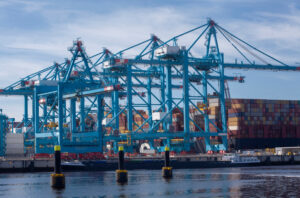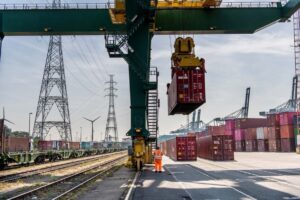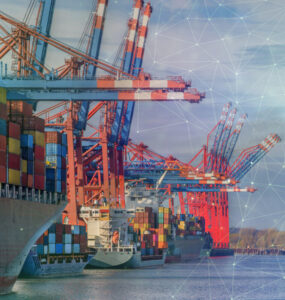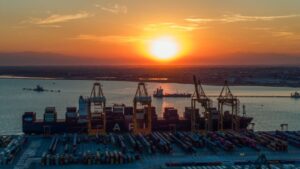A new $3 million SmartPort project in Louisiana will leverage data analytics to improve port awareness and will reduce emissions for inland shipping.
The SmartPort initiative was launched in June 2021 through a $1.6 million grant from the US Economic Development Administration and a $1.4 million commitment from state and port partners.
The initiative will bring in technology giant IBM to create a platform which takes in bathymetric data of the Mississippi Riverbed.
Access to the platform, ready by mid-2023 at the latest, will be offered to vessels using the river and ports along the river.
Using Machine Learning (ML) and Artificial Intelligence (AI), the new platform will take in the data and forecast changes in shoaling for ports.
Customised for specific ports, operatives will be able to see in real-time the shoaling forecasts of the riverbed, as well as a tailored resilience strategy based National Oceanic Atmosphere Resilience Index.
Justin Ehrenwerth is President and CEO of The Water Institute of the Gulf (a non-profit research institution applying advanced science to the Gulf region) and one of the leads of the scheme.
Ehrenwerth said that one catalyst for the scheme was a recent emergency dredging tender worth $3 million issued by the Port of New Orleans which highlighted the state’s issues with regard to forecasting sediment changes in the Mississippi River.
“I was surprised to learn that the port and all ports on the Mississippi River don’t have more advanced analytics to be able to predict the movement of sediment before the problem occurs,” he said.
A factor behind the lack of advanced analytics could be the fact that the US Army Corps of Engineers take regular surveys of asymmetry data, and stakeholders in ports and inland shipping believe the current system has “more or less” worked, Ehrenwerth commented.
“And as I appreciate it, it’s just an accepted fact among port executives along the Mississippi River that – from time to time – you will have shoaling challenges,” he said.
With the new initiative, the “constructively disruptive technology” harnesses survey grade data to predictively analyse sediment movement and prevent issues before they occur.
Scalability
By mid-2023, the initiative aims to bring in an additional minimum number of 80 vessels to the platform. The scheme currently has 12 vessels committed.
Ever-increasing sources of data from ports, vessels, and its plethora of stakeholders means the platform “is just scratching the surface” of AI/ML analytics for inland shipping.
One element where ports can benefit is through energy efficiencies.
A barge pilot could recognise a major issue ahead of time on the lower part of the river, allowing reduction of the throttle, burning less fuel and optimising shipping usage, for example.
“We recognise that inland navigation is the greenest form of transportation, much more so than air, rail, or road,” he commented. “The smarter those vessel operators can be, the better.
“It’s an exciting landscape when you when you, when you, when you begin to consider all this possible,” he said.
“Our hope is that we can develop something that is useful in the Lower Mississippi river area, and that that technology can help other stakeholders as part of our research mission.”









